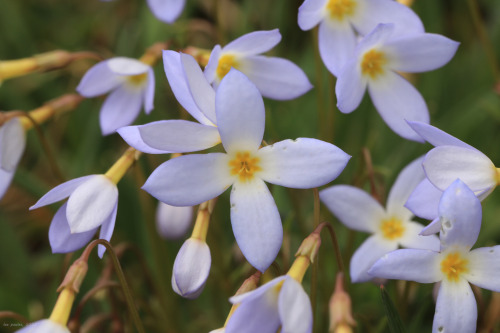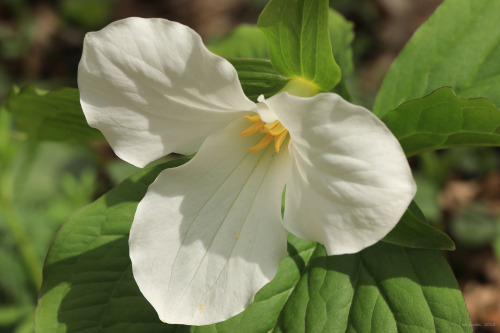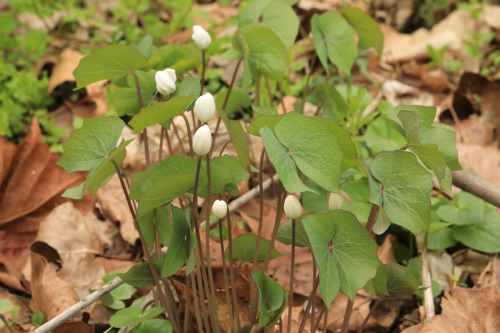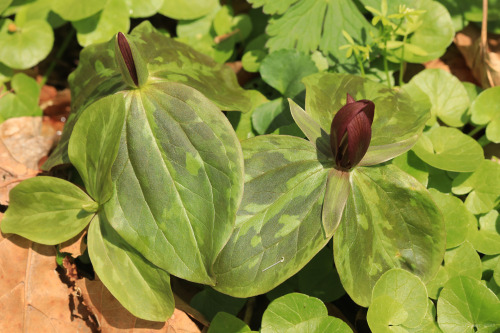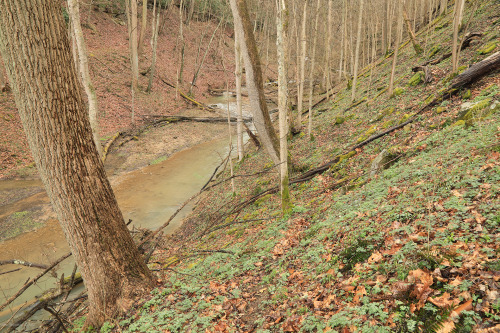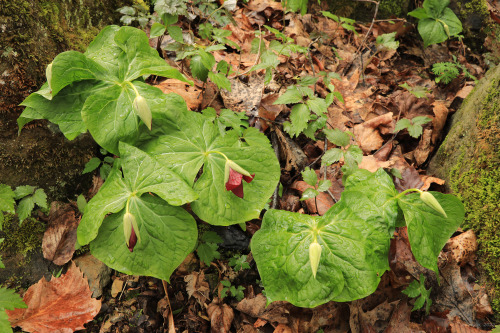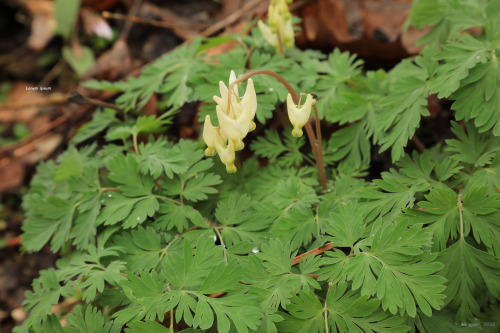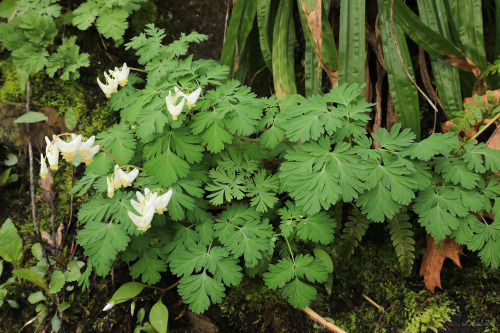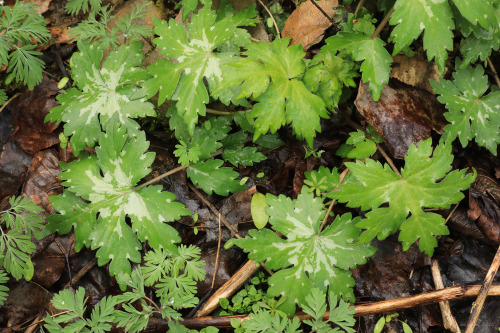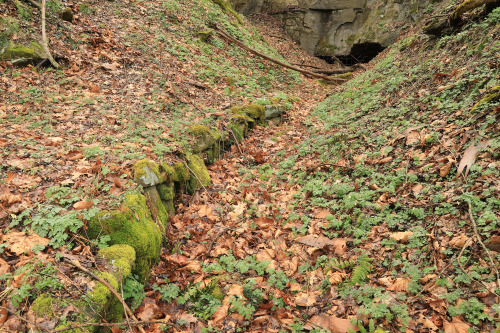#great white trillium
In honor of fishdetective, yet another barrage of tiny flower close-ups - courtesy of the riparian habitat along Dunkard Creek.
From top: early saxifrage (Micranthes virginiensis); azure bluet (Houstonia caerulea), also known as Quaker ladies; Dutchman’s breeches (Dicentra cucullaria); great white trillium (Trillium grandiflorum); swamp buttercup (Ranunculus septentrionalis); twinleaf (Jeffersonia diphylla); and sessile trillium (Trillium sessile), also known as toadshade and toad trillium.
Field Notes:
1. Early saxifrage is most at home in the moist cracks and crevices of rock outcroppings, but occasionally takes to streambanks. All the saxifrages are quite beautiful and many are edible, although somewhat bitter-tasting.
2. Although botanists dispute whether or not swamp buttercup is a distinct species from hispid buttercup (Ranunculus hispidus), both plants are capable of producing striking pops of yellow color along seeps and springs from mid-spring to early summer. Our native buttercups can be distinguished from the infamously-invasive creeping buttercup (Ranunculus repens) by their upward growth habit, more deeply-cleft leaves, and lack of white blotches on the leaves.
3. Easily identified by its twin-lobed leaves resembling angel wings, twinleaf is one of Appalachia’s most unusual wildflowers. The plant’s fragile, white flowers have a very short bloom period (less than a week), in part because the petals are easily blown apart by the slightest breeze. Twinleaf is extremely picky about where it grows and is becoming increasingly rare throughout its range.
4. How could you not love a plant with the name of “toadshade”? I always lift the bracts just to check.
Post link
A week and a half into April and despite a cold snap, the first wave of spring ephemerals is making a hard push along the Mon River Trail. Even when striking demure poses under a cold spring rain, these short-lived beauties put on a memorable show. Among the early arrivals are: Carolina spring beauty (Claytonia caroliniana), which has broader leaves than its close relative, Virginia spring beauty (Claytonia virginica); purple trillium (Trillium erectum), also known as wake robin, a gorgeous stinker pollinated by carrion flies and beetles; Dutchman’s breeches (Dicentra cucullaria), also known as little blue staggers, whose narcotic properties are known to cause grazers to stagger drunkenly after nibbling on them; great white trillium (Trillium grandiflorum), which when left undisturbed forms enormous drifts on Appalachia’s rich, well-drained slopes; and bluntleaf waterleaf (Hydrophyllum canadense), also known as mapleleaf waterleaf, a stunningly-patterned and increasingly rare perennial of moist, rich soils.
Field Notes:
1. I have a real fondness for the waterleafs, whose ornately-patterned foliage and tolerance for moist soils make them well-suited for poorly-drained spots in native wildflower gardens. Bluntleaf waterleaf is my favorite, however. The plant’s distinctive watermark, a distinguishing feature that gives the waterleafs their common name, is particularly striking in early spring - a vivid and evocative Rorschach test courtesy of nature.
Post link




